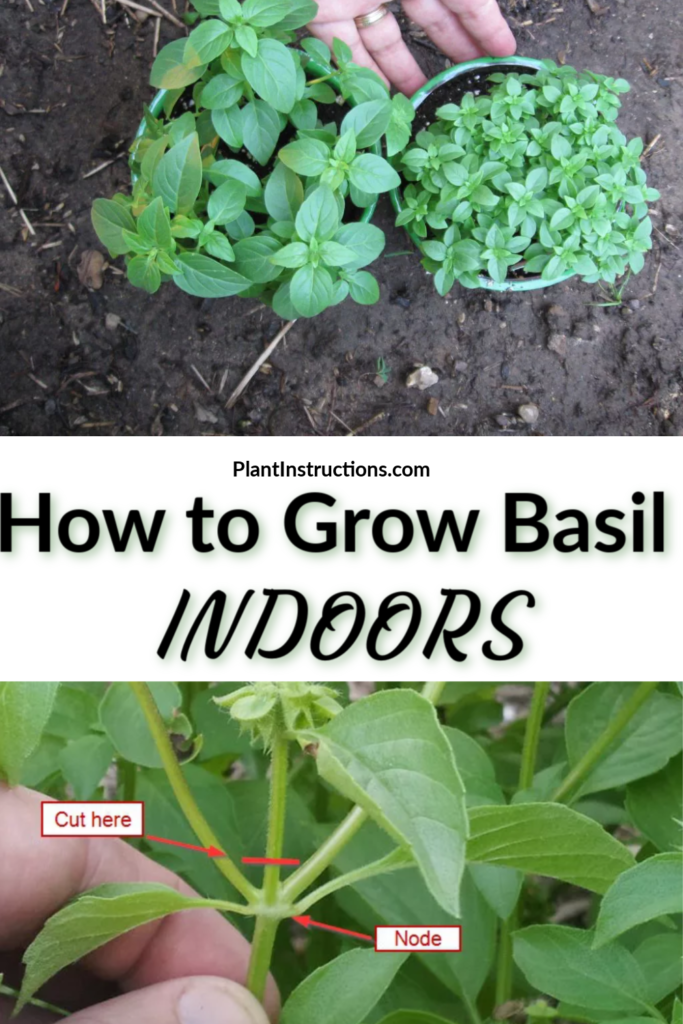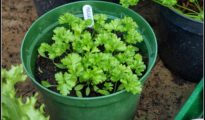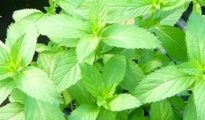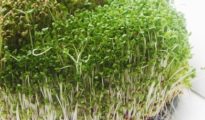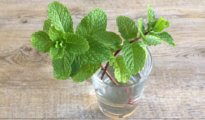Basil is a fragrant herb you can grow during winter to help you overcome the cold winter months. With their fresh smell that brings back the memory of a summer garden, basil is the perfect herb to grow indoors. Keep reading to learn more about growing basil indoors!
Growing basil indoors is super easy. Basil is an annual herb that grows very quickly producing an abundance of fresh leaves 3-4 weeks. You can grow basil indoors at any time of the year and enjoy their fresh leaves all year round. When given the proper care you can successfully grow basil either from seeds or grow them in water.
Growing Basil Indoors
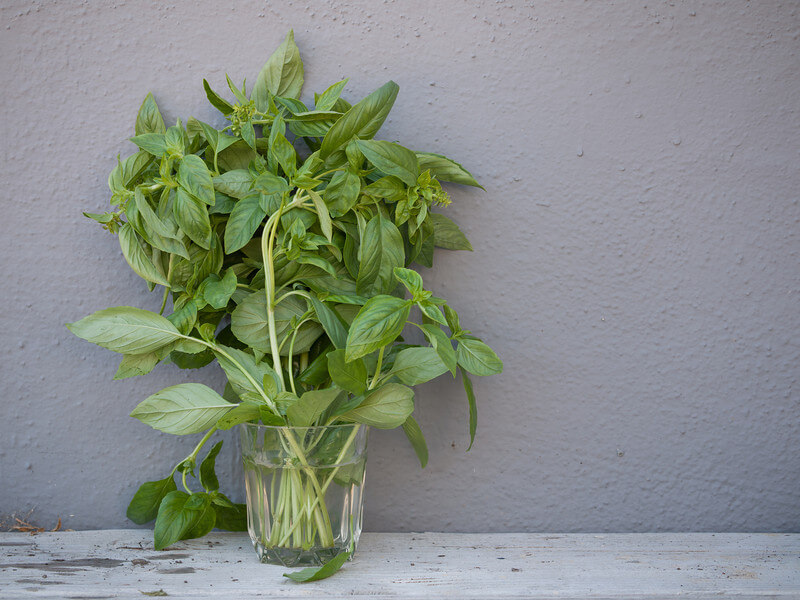
Soil:
Basil needs nutrient-rich soil that drains well to grow successfully and healthy. Choose a well-draining, coarse soil to plant your basil seeds. You can find rich, well-draining potting mix at your local nursery or online.
Light:
Basil is an herb that loves the warmth, therefore make sure you provide at least 6 hours of sunlight per day to your plant. During their seedling stage, the will need more attention, so provide at least 12-16 hours of light. If you are growing in winter and don't get much sunlight during the day, you can always use grow lights to replace the natural sunlight.
pH Level:
The ideal pH level for basil is between 6.0 to 7.5. Maintain this pH level by checking the soil once a month. If the pH level is not the correct, amend the soil by using organic fertilizer found at your local nursery or online. Make sure the fertilizer is organic if you decide to use the herb for culinary uses. Mix the organic fertilizer with the soil and then test the pH levels.
Temperature:
The optimal growing conditions for basil is a temperature of 72.5-82.4 F. Try to maintain this, as this herb doesn't do well with a temperature of less than 50F. As we mentioned above, basil is an herb that loves the warmth. Provide warmth and your basil will reward you with lots of fresh leaves multiple times of the year.
Growing Basil Indoors From Seed:
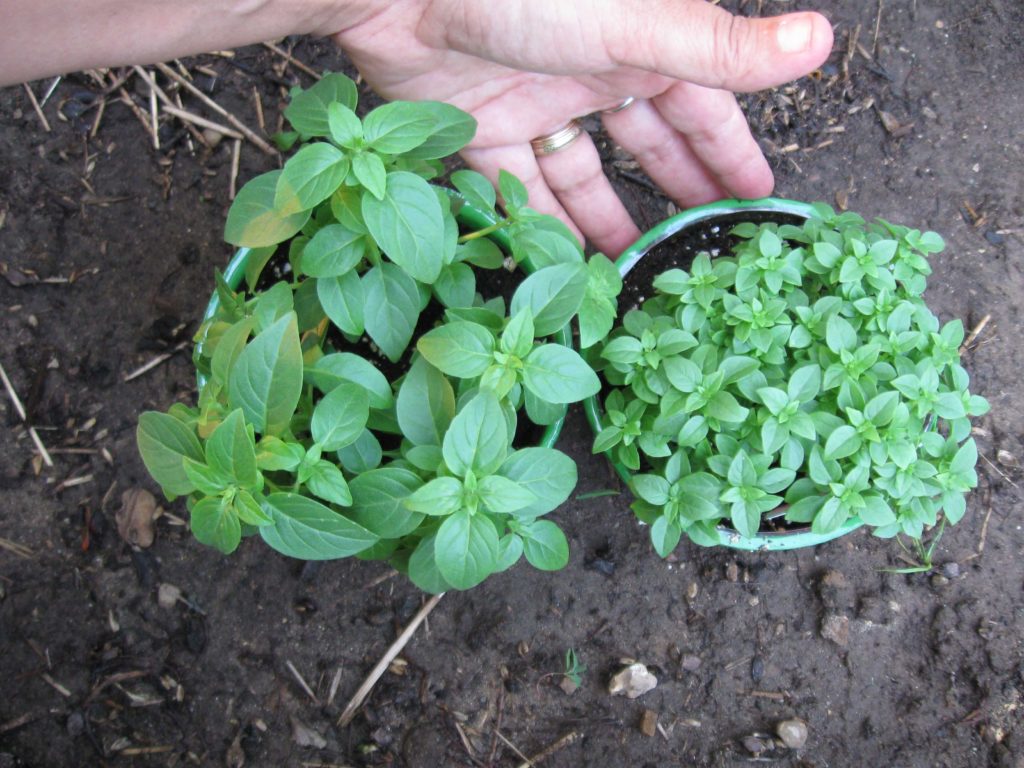
- Purchase basil seeds from a reliable source.
- Choose a container with good drainage holes to plant your basil. You can always use a seed starter and then transplant the seedlings to a pot.
- Fill 3/4 of your pot with well-draining potting soil.
- Place 5-7 seeds on top of the soil of your pot, and if you are using seed starters, place 3 seeds per tray. Place the seeds evenly apart from each other. One inch apart will be ideal.
- Cover the seeds with a a few inches of soil. This layer will protect the seeds while helping them grow.
- Add some moisture to the soil by spraying with water. Use a spray bottle or your hands, to sprinkle the water over your soil, especially the added top layer.
- Place the pot near a warm spot to provide the lighting conditions mentioned your basil needs. Near a window is one of the best spots to place your basil, but make sure to not place it too close to the glass window.
- After 5-10 days, your basil seeds will start germinating and eventually, sprouts will start to appear. Keep maintaining your seeds moist and warm to help them sprout faster.
Rooting Basil Cuttings in Water:
If you don't want to start from the seeds, you can always grow your basil from cuttings. All you need is a cutting from an existing plant and a glass /container with water. This easy method will help grow your basil in water until it's ready to be transplanted into a pot in just 2-3 weeks. Keep reading to find out more!
- From an existing basil plant, take several cuttings. Remove all the lower leaves and flowers from this cutting, only leaving 2-3 sets on top.
- Place the cuttings in a transparent glass container or jar and fill it with water. Make sure that only 1/3 part of the stem is submerged in water.
- Place the glass container or glass in a sunny spot where it will receive indirect sunlight and morning sun. Near a window of windowsill will be ideal.
- Change the water every 1-2 days while you keep an eye on the roots growing.
- After 2-3 weeks roots will start to form. Wait until the roots are at least 2-3 inches long to transfer.
- When the basil roots are big enough, transfer the cuttings to a container filled with well-draining potting soil.
- Slightly water the pot and place it in a warm spot to keep taking care of the plant.
Caring for your Basil Plants
Watering:
- Water your basil plant twice a week to keep it hydrated.
- Pour the water right into the soil line instead of on the leaves and stem.
- Test the dampness by sticking a finger into the soil. If the soil feels dry at 1 inch deep, water.
- Another ideal way of watering your basil is from the bottom.
- Place the pot into a bowl of water until the top gets wet.
- Remove the pot and put it back in its saucer. If the saucer is wide enough, you can use it instead of the bowl.
Air Circulation:
- Simulate a natural habitat with a fan. Basil needs good air circulation and movement to grow well.
- Place a fan near the plant and put it on its lowest setting.
- Allow the fan to rustle the leaves for 2 hours a day.
- This method will work like an outdoor breeze preventing the air around the plant from getting too stagnant.
- If you don't have a fan, simply give the plants enough space between them and rotate them daily.
Pruning:
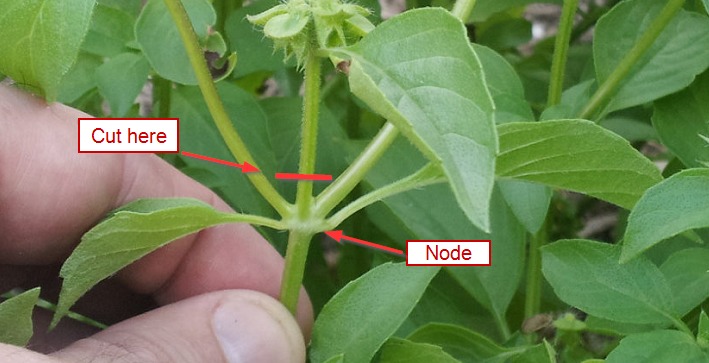
- Once the seedlings have 2 pairs of leaves, thin them so they are 6-12 inches apart. You can plant the removed seedling in another pot or in the same pot, 6-12 inches away from others.
- Prune the top of the seedling when it reaches 6 inches in height.
- Using sharp scissors, cut above the seedlings with 3 sets of leaves to prevent your basil from becoming leggy and encourage better leaf growth.
- Prune your basil every couple of weeks focusing on removing damaged, weak and stunted leaves.
- Use the pruned leaves in your kitchen!
- Learn more about how to prune basil!
Harvesting Your Basil:
- You can start harvesting your basil as soon as it has 7 or more leaves.
- Cut off full stems to promote new growth. This is similar to pruning.
- Always harvest before flowering since the leaves will be at the fresher state.
Like this post? Pin, share and comment below 🙂
